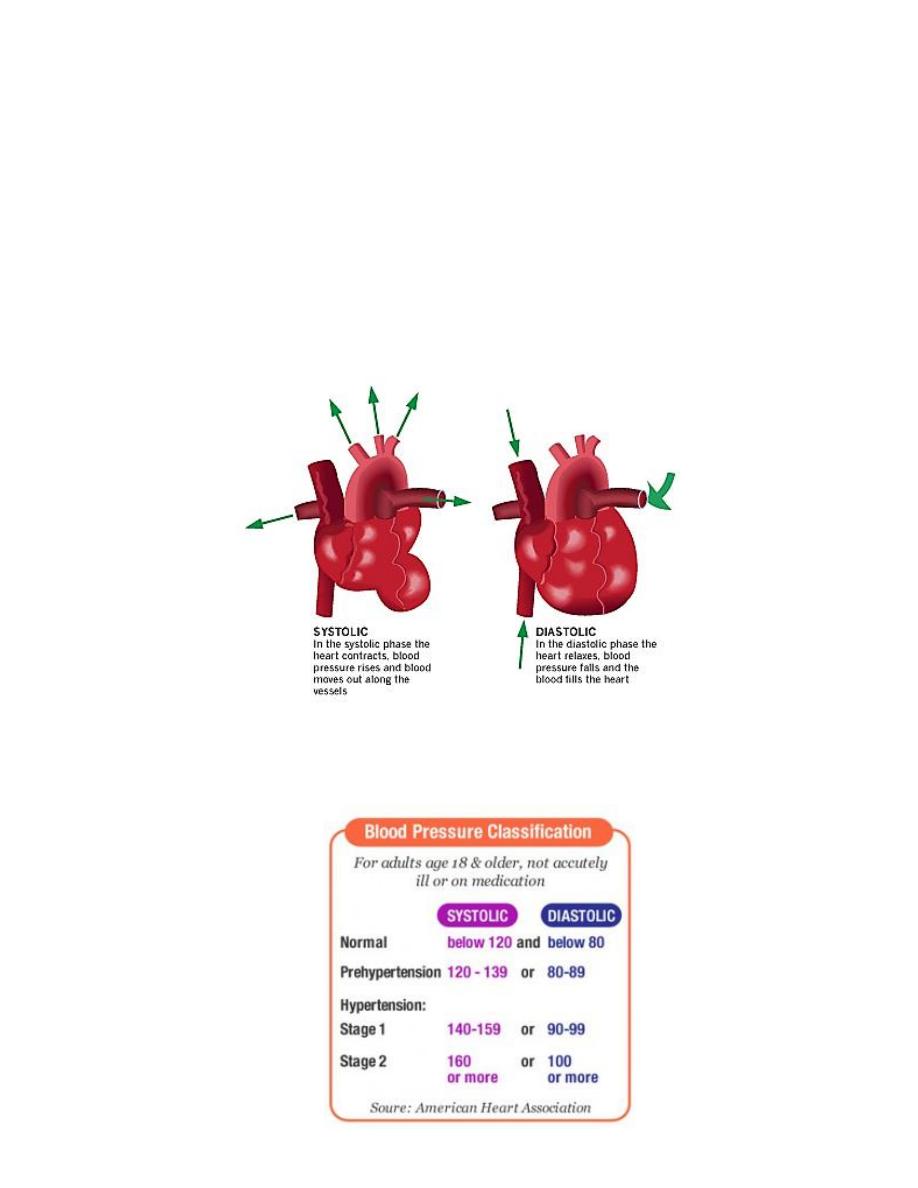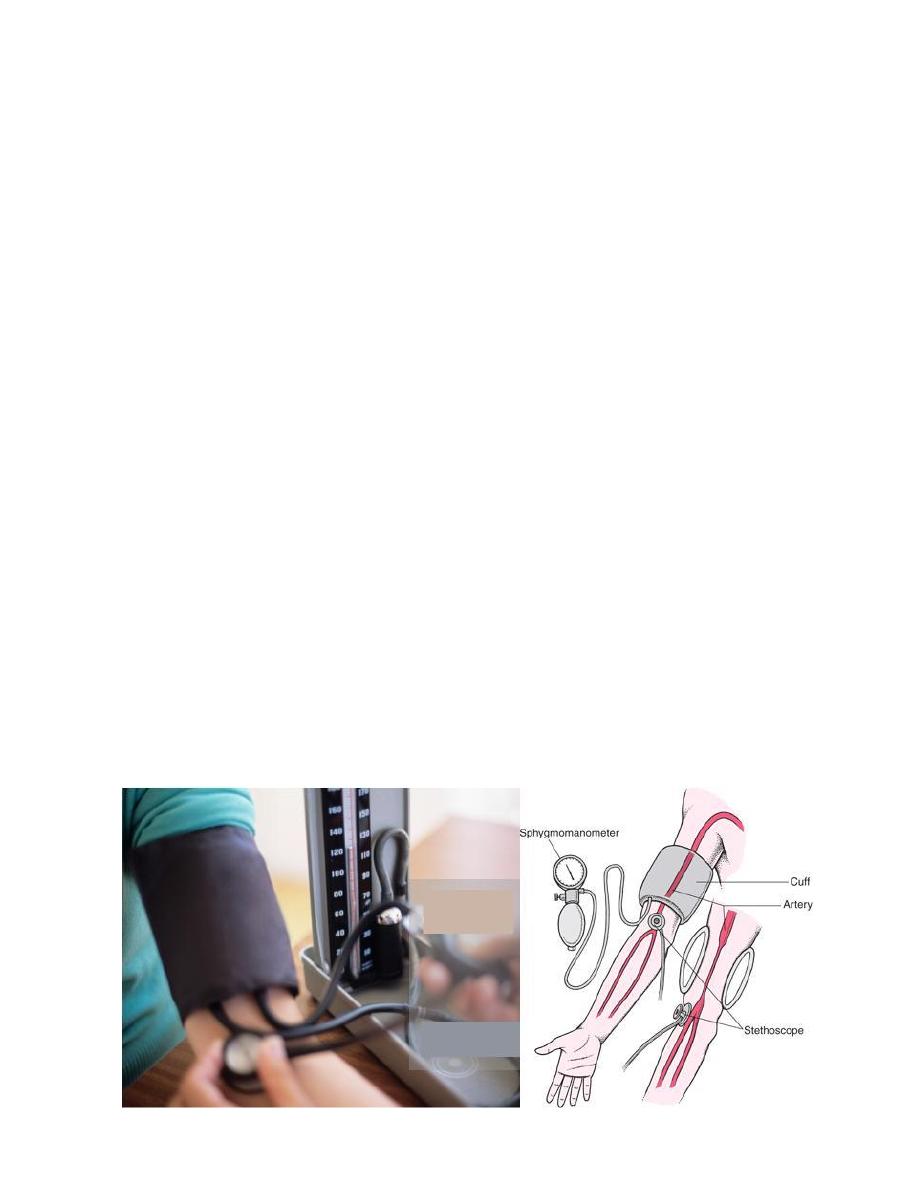
Blood pressure and effect of exercise on the blood pressure
The pressure exerted by the circulating blood upon the walls of blood vessels,
which includes two values:
- Systolic value:
pressure in arteries generated by the left ventricle during systole
(about 120 mmHg)
- Diastolic value: the pressure remaining in the arteries when the ventricle is at
the end of the diastole (about 80 mmHg)
Blood pressure is usually measured in the brachial artery in the left arm
According to American Heart Association, blood pressure should be kept below
120/80mmHg (systolic/diastolic), otherwise the patient considered pre-
hypertensive or hypertensive, as shown in the following table.
Lab 1

Blood measuring procedure
The device used to measure blood pressure is a sphygmomanometer, which
consists of inflatable rubber cuff and a meter that registers the pressure in the
cuff.
- the arm should be laid on a table so that it is approximately at the same level as
the heart is and the cuff is positioned around the bare arm one inch above the
antecubital fossa.
- Lightly press the stethoscope's bell over the brachial artery just below the cuff's
edge
- Inflating the cuff which will compress the brachial artery, leading to a transient
stop of blood flow through the compressed blood vessels.
- After reaching about 200mmHg (it depends), decease the pressure within the
cuff by slow deflation. The first knocking sound is the subject's systolic pressure.
When the knocking sound disappears, this is the diastolic pressure (such as
120/80).
-
Record the pressure in both arms and note the difference; also record the
subject's position (supine), which arm was used, and the cuff size (small, standard
or large adult cuff).
Note: If the subject's pressure is elevated, measure blood pressure two additional
times, waiting a few minutes between measurements

Blood Pressure during Exercise (Short term)
Exercise increase in heart rate increase the force heart contractions
More blood is pumped with each beat
Increase blood pressure
Blood vessels that supply the body’s muscles dilate, or get larger
Enables increased blood flow to body’s muscles without putting
excess pressure on your blood vessel walls
So while your blood pressure rises during exercise, it is to a much smaller
degree than the increase in heart rate. Like your heart rate, your blood pressure
returns to resting level a few minutes after you stop exercising.
Long-Term Effects on Blood Pressure
- Regular exercise has blood-pressure-lowering effects in people with or without
high blood pressure, or hypertension.
- regular aerobic exercise decreases blood pressure 4 to 5 percent in people with
hypertension and 1 to 2 percent in people with normal blood pressure.
- Significant blood pressure reductions could be obtained after 12 weeks of
regular exercise.
